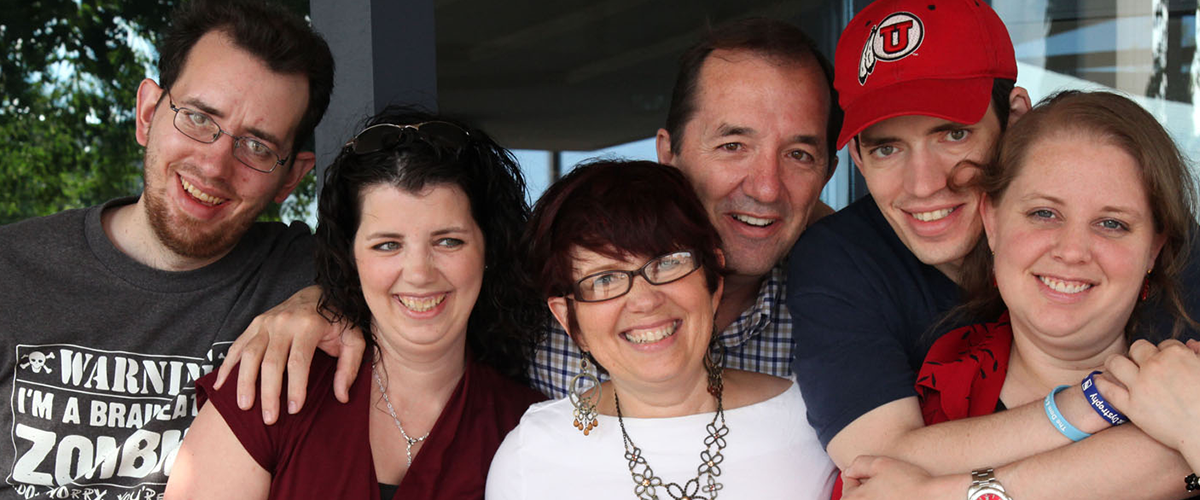The Lundys: Providing Support for Those with DM

In November of 2012, Christian Lundy of Ottawa, Canada, was hospitalized with pneumonia. With his wife Kelly at his side, Christian endured weeks of hospitalization and intubation. Doctors became worried when Christian didn’t improve as quickly as expected and began to take a closer look at the possible reasons for his slow recovery.
One of the attending physicians recognized Christian’s symptoms and shared his diagnosis with the Lundys. Kelly recalls the doctor writing “myotonic dystrophy” on the corner of a piece of paper and handing it to them. “That day," she says, "we left the doctor’s office with that torn scrap of paper, an appointment to see a geneticist, and little else.”
Kelly began researching DM online. She came across the Myotonic website, where she found information about DM that was “organized and easy to follow.” For the Lundys, having comprehensive information about the disorder reduced their anxiety and helped them cope with the shock of the diagnosis.
That first year was extremely difficult. Christian suffered multiple bouts of DM-related pneumonia and his symptoms became more pronounced. He wasn’t able to return to work, and the young couple’s lives changed rapidly.
They both sought counseling and attribute that assistance with getting them through those difficult first months. However, Kelly knew she wanted a support group and there were none in her area. When Kelly saw Myotonic’s call for support group facilitators, she signed up. “Sometimes you have to create what you seek in life,” says Kelly. The Lundys launched their Ottawa support group last year and the group has been consistently growing ever since.
Numerous studies have reported improved outcomes for patients and family members affected by chronic illness who participate in support groups, and the Lundys know first-hand the added value their support group has created. They report they’ve made life-long friends of other support group participants and have built a network for sharing information, resources and knowledge.
Together, the Lundys are committed to building awareness about DM and bringing local DM community members into their support group. Kelly regularly distributes flyers to medical offices that provide care to DM patients. For each support group meeting, Kelly invites a DM professional to give a presentation for part of the meeting. A team of scientists from Ottawa University attended a recent meeting and presented an outline of their research, promising to follow up with the group about their results.
For those thinking about starting a local support group, Kelly has some advice: “Make sure that this is something that you really want to do. It’s unfair to participants to start the process, only to quit because you can no longer fit it into your life.” She suggests seeking assistance from others in the group and says, “When it all starts to come together, and you realize that your attendees appreciate your efforts, it is completely worth all the work."
The Lundys continue to enjoy and take comfort from their new-found DM community in Ottawa, hosting parties and attending get-togethers with their new friends. They are looking forward to this year’s Myotonic Annual Conference, where they’ll meet up with friends they met at last year’s conference. At Myotonic we’re grateful to the Lundys for their dedication to providing an engaging support group, and we look forward to seeing them this fall at the conference in Washington, DC!
To find a support group near you, click here.
For information on starting an Myotonic support group, click here.











